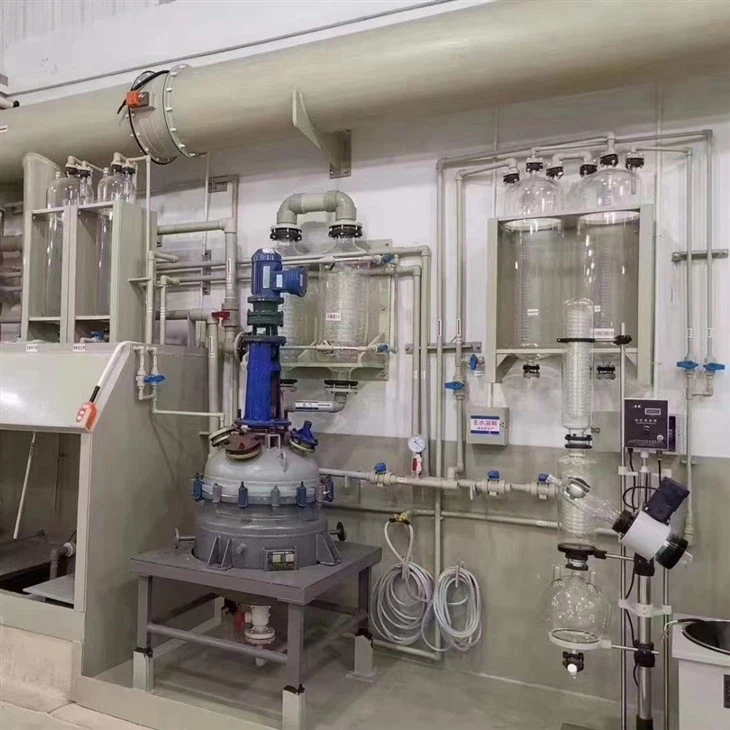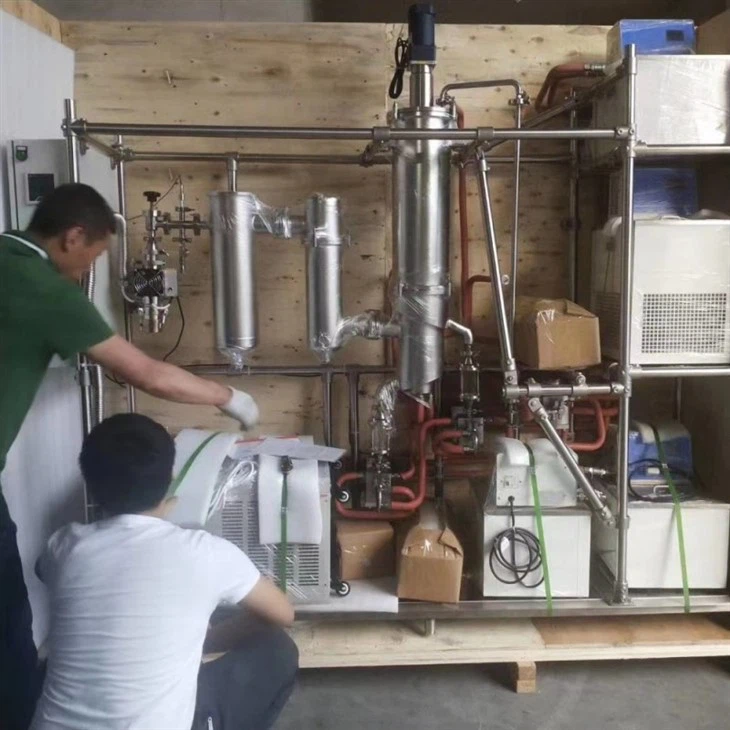Short-Path Distillation: Evolution and Applications
Jun 13, 2024
Leave a message
Introduction

In the realm of chemical engineering and industrial processes, distillation has long been a cornerstone technique for separating components of mixtures.
Among the various distillation methods, short-path distillation, also known as molecular distillation, has emerged as a highly specialized and efficient technique, particularly suitable for the separation of materials with high boiling points, high heat sensitivity, and easy oxidizability.
This article aims to explore the evolution of short-path distillation, its principles, and its diverse applications across various industries.
Evolution of Short-Path Distillation
The concept of short-path distillation dates back to the early 20th century, when researchers began exploring alternative distillation methods that could offer faster separation and higher purity products. Traditional distillation methods, though effective, often required long distillation paths and high temperatures, leading to thermal degradation and reduced product quality. Short-path distillation offered a solution by utilizing a shorter path for vaporization, resulting in faster separation and less thermal degradation.
The initial development of short-path distillation focused on the design and optimization of distillation equipment. The wiped film short-path distiller, for instance, emerged as a type of short-path distillation equipment with high evaporation rates. The agitation of the wipers accelerated the renewal of the liquid film surface, enhancing heat transfer and evaporation performance. Over time, improvements in materials, heating methods, and vacuum systems further enhanced the efficiency and reliability of short-path distillation.
Principles of Short-Path Distillation
The working principle of short-path distillation lies in the utilization of vacuum and high temperatures to separate components of a mixture. The feed material is heated to a temperature slightly below its boiling point, creating a vapor phase that travels a short distance to a condenser. The short path between the evaporator and condenser minimizes the residence time of the vapor, reducing the potential for thermal degradation.
In short-path distillation, the separation is based on the molecular weight and volatility of the components rather than their boiling points. Lighter molecules with lower boiling points and higher volatility tend to vaporize first and travel the short path to the condenser, while heavier molecules remain in the liquid phase. This allows for the separation of components with similar boiling points but different molecular weights.

Applications of Short-Path Distillation
Short-path distillation has found widespread applications across various industries, owing to its unique advantages. In the fine chemical industry, short-path distillation is used for the purification of heat-sensitive compounds such as natural vitamins, essential oils, and pharmaceutical intermediates. Its ability to operate at low temperatures and short exposure times minimizes thermal degradation and ensures high product purity.
In the food industry, short-path distillation is used for the extraction and concentration of flavor compounds from natural sources. It can effectively separate volatile components from complex mixtures, such as essential oils from plants or flavor compounds from fermented foods. The short residence time of the vapor ensures minimal degradation of the delicate flavor compounds.
In the oil and grease industry, short-path distillation plays a crucial role in the regeneration of waste lubricating oil. By separating contaminants and impurities from the oil, short-path distillation can restore the oil's properties and extend its useful life. This not only reduces the environmental impact of waste oil disposal but also provides a cost-effective solution for oil recycling.
Furthermore, short-path distillation has also found applications in the production of biodiesel from renewable sources such as vegetable oils. By distilling the raw oil under high vacuum and low temperatures, short-path distillation can effectively separate glycerides and fatty acids, producing high-quality biodiesel with low sulfur and aromatic content.
In recent years, the field of short-path distillation has undergone significant advancements, driven primarily by technological innovations and a growing demand for high-purity products across various industries. Here are some key highlights of the research progress in this area:
Technological Advances:
The introduction of novel distillation techniques, such as molecular distillation, has revolutionized the separation process. Molecular distillation, also known as short-path distillation, relies on the difference in molecular mean free paths to achieve separation, resulting in faster and more efficient processes.
Advances in equipment design, such as the development of centrifugal molecular distillation units, have further improved evaporation efficiency and product purity.
Application Expansion:
Short-path distillation is now widely used in the chemical, pharmaceutical, and food industries, where high-purity components are crucial.
The technique is particularly suitable for the separation, concentration, and purification of heat-sensitive, easily oxidized active substances, as well as high-molecular-weight, high-boiling-point, and high-viscosity materials.
Environmental Considerations:
With global awareness of environmental protection increasing, researchers are focusing on developing energy-efficient and environmentally friendly distillation processes.
Advances in distillation technology have led to a reduction in energy consumption and waste generation, making the processes more sustainable.
Future Prospects:
With continued research and technological innovations, short-path distillation is expected to achieve even higher levels of efficiency and product purity.
The integration of digital technologies, such as artificial intelligence and machine learning, could further optimize distillation processes and reduce operational costs.
Conclusion
In conclusion, short-path distillation has evolved into a highly specialized and efficient separation technique with broad applications across various industries.
Its unique advantages, such as low temperatures, short exposure times, and high evaporation efficiency, make it especially suitable for the separation of materials with high boiling points, high heat sensitivity, and easy oxidizability.
As technology continues to advance, it is expected that short-path distillation will find even more applications in the future, contributing to the development of sustainable and environmentally friendly industrial processes.

